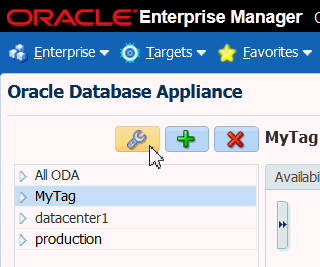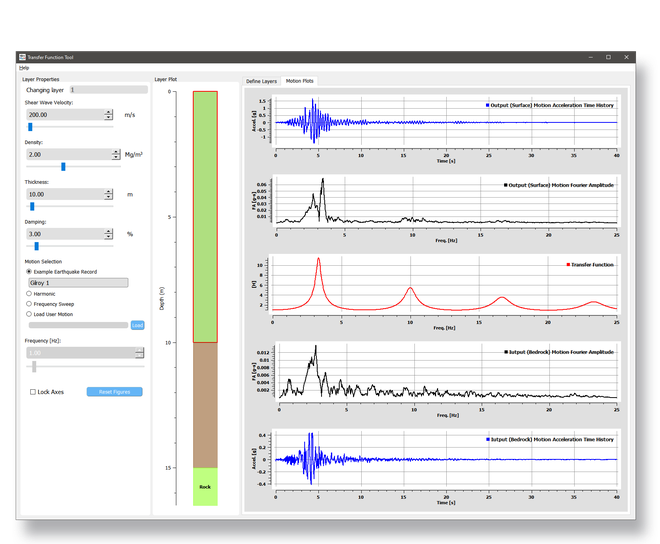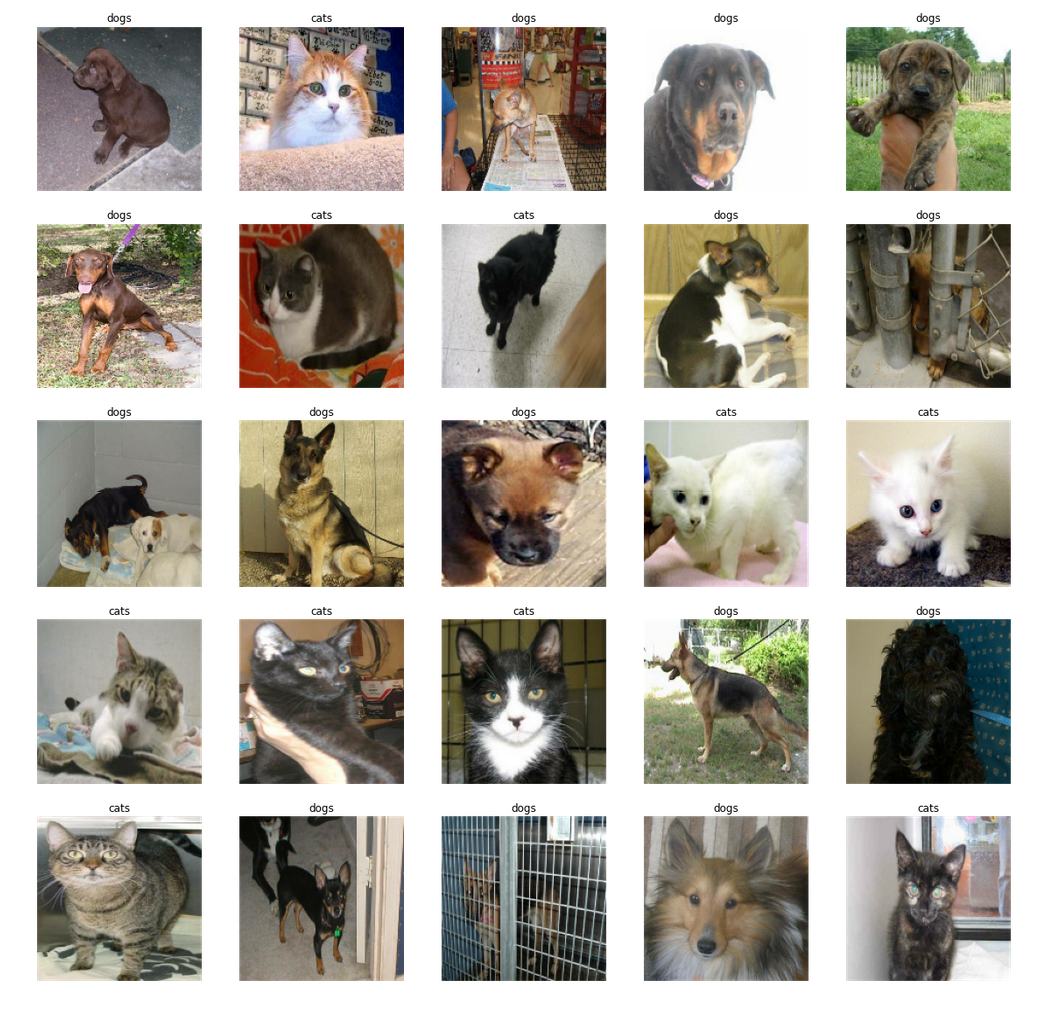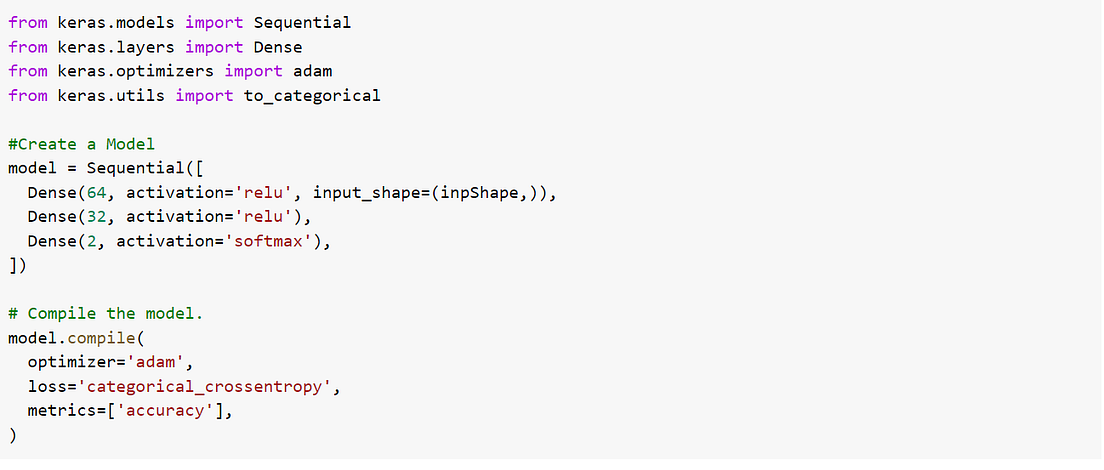44 tf dataset get labels
Multi-Label Image Classification in TensorFlow 2.0 model.compile(optimizer=tf.keras.optimizers.Adam(learning_rate=LR), loss=macro_soft_f1, metrics=[macro_f1]) Now, you can pass the training dataset of (features, labels) to fit the model and indicate a seperate dataset for validation. The performance on the validation set will be measured after each epoch. python - Get labels from dataset when using tensorflow image_dataset … 04/11/2020 · I am trying to add a confusion matrix, and I need to feed tensorflow.math.confusion_matrix() the test labels. My problem is that I cannot figure out how to access the labels from the dataset object created by tf.keras.preprocessing.image_dataset_from_directory() My images are organized in directories …
How to get the labels from tensorflow dataset - Stack Overflow How to get the labels from tensorflow dataset Ask Question 0 ds_test = tf.data.experimental.make_csv_dataset ( file_pattern = "./dfj_test/part-*.csv.gz", batch_size=batch_size, num_epochs=1, #column_names=use_cols, label_name='label_id', #select_columns= select_cols, num_parallel_reads=30, compression_type='GZIP', shuffle_buffer_size=12800)

Tf dataset get labels
Build a computer vision model with TensorFlow | Google Developers 29/06/2021 · import tensorflow as tf print(tf.__version__) You'll train a neural network to recognize items of clothing from a common dataset called Fashion MNIST. It contains 70,000 items of clothing in 10 different categories. Each item of clothing is in a 28x28 grayscale image. You can see some examples here: The labels associated with the dataset are: Loading Custom Image Dataset for Deep Learning Models: Part 1 19/08/2020 · We can also convert the input data to tensors to train the model by using tf.cast() history = model.fit(x=tf.cast(np.array(img_data), tf.float64), y=tf.cast(list(map(int,target_val)),tf.int32), epochs=5) We will use the same model for further training by loading image dataset using different libraries. Loading image data using PIL How to solve Multi-Label Classification Problems in Deep ... - Medium time: 7.8 s (started: 2021-01-06 09:30:04 +00:00) Notice that above, the True (Actual) Labels are encoded with Multi-hot vectors Prepare the data pipeline by setting batch size & buffer size using ...
Tf dataset get labels. tfdf.keras.pd_dataframe_to_tf_dataset - TensorFlow Details Ensures columns have uniform types. If "label" is provided, separate it as a second channel in the tf.Dataset (as expected by Keras). If "weight" is provided, separate it as a third channel in the tf.Dataset (as expected by Keras). If "task" is provided, ensure the correct dtype of the label. passing labels=None to image_dataset_from_directory doesn't work ... import tensorflow as tf train_images = tf.keras.preprocessing.image_dataset_from_directory( 'images', labels=None, ) ... If you wish to infer the labels from the subdirectory names in the target directory, pass `labels="inferred"`. If you wish to get a dataset that only contains images (no labels), pass `labels=None`. The text was updated ... TensorFlow 2 Tutorial: Get Started in Deep Learning with tf.keras 02/08/2022 · Predictive modeling with deep learning is a skill that modern developers need to know. TensorFlow is the premier open-source deep learning framework developed and maintained by Google. Although using TensorFlow directly can be challenging, the modern tf.keras API brings Keras's simplicity and ease of use to the TensorFlow project. Using tf.keras … tf.data.Dataset.from_tensor_slices() - GeeksforGeeks Syntax : tf.data.Dataset.from_tensor_slices(list) Return : Return the objects of sliced elements. Example #1 : In this example we can see that by using tf.data.Dataset.from_tensor_slices() method, we are able to get the slices of list or array.
TensorFlow Datasets By using as_supervised=True, you can get a tuple (features, label) instead for supervised datasets. ds = tfds.load('mnist', split='train', as_supervised=True) ds = ds.take(1) for image, label in ds: # example is (image, label) print(image.shape, label) TensorFlow 2 Tutorial: Get Started in Deep Learning with tf.keras Aug 02, 2022 · Predictive modeling with deep learning is a skill that modern developers need to know. TensorFlow is the premier open-source deep learning framework developed and maintained by Google. Although using TensorFlow directly can be challenging, the modern tf.keras API brings Keras’s simplicity and ease of use to the TensorFlow project. Using tf.keras allows you to design, […] Meaning of buffer_size in Dataset.map , Dataset.prefetch and ... The buffer_size argument in tf.data.Dataset.prefetch() and the output_buffer_size argument in tf.contrib.data.Dataset.map() provide a way to tune the performance of your input pipeline: both arguments tell TensorFlow to create a buffer of at most buffer_size elements, and a background thread to fill that buffer in the background. tf.data.Dataset select files with labels filter Code Example tf.dataset from tensor slices; tensorflow next data ; convert jpeg and xml labelimgto tf.data.dataset; tf.data.dataset.filter file with specific class; how to create batches in tensorflow; tf.data.dataset get labels; tf dataset filter files ; tf.data.dataset sparse dscipy; convert x,y to batch dataset tensorflow; training_data.map tensorlfow
tensorflow tutorial begins - dataset: get to know tf.data quickly def train_input_fn( features, labels, batch_size): """An input function for training""" # Converts the input value to a dataset. dataset = tf. data. Dataset. from_tensor_slices ((dict( features), labels)) # Mixed, repeated, batch samples. dataset = dataset. shuffle (1000). repeat (). batch ( batch_size) # Return data set return dataset How to use Dataset in TensorFlow - Towards Data Science dataset = tf.data.Dataset.from_tensor_slices (x) We can also pass more than one numpy array, one classic example is when we have a couple of data divided into features and labels features, labels = (np.random.sample ( (100,2)), np.random.sample ( (100,1))) dataset = tf.data.Dataset.from_tensor_slices ( (features,labels)) From tensors A hands-on guide to TFRecords - Towards Data Science To get these {image, label} pairs into the TFRecord file, we write a short method, taking an image and its label. Using our helper functions defined above, we create a dictionary to store the shape of our image in the keys height, width, and depth — w e need this information to reconstruct our image later on. IMDB movie review sentiment classification dataset - Keras This is a dataset of 25,000 movies reviews from IMDB, labeled by sentiment (positive/negative). Reviews have been preprocessed, and each review is encoded as a list of word indexes (integers). For convenience, words are indexed by overall frequency in the dataset, so that for instance the integer "3" encodes the 3rd most frequent word in the data.
Data preprocessing using tf.keras.utils.image_dataset_from_directory Let's say we have images of different kinds of skin cancer inside our train directory. We want to load these images using tf.keras.utils.images_dataset_from_directory () and we want to use 80% images for training purposes and the rest 20% for validation purposes. We define batch size as 32 and images size as 224*244 pixels,seed=123.

python - Why does shuffling sequences of data in tf.keras.dataset affect the order of sequences ...
How to use tf.data.Dataset.map() function in TensorFlow - gcptutorials Lets normalize the images in dataset using map () method , below are the two steps of this process. def normalize_image(image, label): return tf.cast (image, tf.float32) / 255., label. Apply the normalize_image function to the dataset using map () method. Lets analyze the pixel values in a sample image from the dataset after applying map () method.
tfds.visualization.show_examples | TensorFlow Datasets TensorFlow Datasets Fine tuning models for plant disease detection This function is for interactive use (Colab, Jupyter). It displays and return a plot of (rows*columns) images from a tf.data.Dataset. Usage: ds, ds_info = tfds.load('cifar10', split='train', with_info=True) fig = tfds.show_examples(ds, ds_info)
Get labels from dataset when using tensorflow image_dataset ... Nov 04, 2020 · I am trying to add a confusion matrix, and I need to feed tensorflow.math.confusion_matrix() the test labels. My problem is that I cannot figure out how to access the labels from the dataset object created by tf.keras.preprocessing.image_dataset_from_directory() My images are organized in directories having the label as the name.
Keras tensorflow : Get predictions and their associated ground truth ... I am new to Tensorflow and Keras so the answer is perhaps simple, but I have a batched and prefetched tensorflow dataset (of type tf.data.TFRecordDataset) which consists in images and their label (int type) , and I apply a classification model on it.
tf.data: Build Efficient TensorFlow Input Pipelines for Image Datasets ... 3. Build Image File List Dataset. Now we can gather the image file names and paths by traversing the images/ folders. There are two options to load file list from image directory using tf.data ...
How to filter the dataset to get images from a specific class? #1923 Is it possible to make predicate function more generic, so that I can keep N number of classes and filter out the rest of the classes? or is there any other way to filter the dataset to get images from a specific class? Environment information. Operating System: Distribution: Anaconda; Python version: <3.7.7> Tensorflow 2.1; tensorflow_datasets ...
How to convert my tf.data.dataset into image and label arrays #2499 A tf.data dataset. Should return a tuple of either (inputs, targets) or (inputs, targets, sample_weights). A generator or keras.utils.Sequence returning (inputs, targets) or (inputs, targets, sample_weights). A more detailed description of unpacking behavior for iterator types (Dataset, generator, Sequence) is given below.
GitHub - google-research/tf-slim Furthermore, TF-Slim's slim.stack operator allows a caller to repeatedly apply the same operation with different arguments to create a stack or tower of layers. slim.stack also creates a new tf.variable_scope for each operation created. For example, a simple way to create a Multi-Layer Perceptron (MLP):
Meaning of buffer_size in Dataset.map , Dataset.prefetch and Dataset … The buffer_size argument in tf.data.Dataset.prefetch() and the output_buffer_size argument in tf.contrib.data.Dataset.map() provide a way to tune the performance of your input pipeline: both arguments tell TensorFlow to create a buffer of at most buffer_size elements, and a background thread to fill that buffer in the background. (Note that we removed the output_buffer_size …
Create TFRecords Dataset and use it to train an ML model To use data extracted from tfrecord for training a model, we will be creating an iterator on the dataset object. iterator = tf.compat.v1.data.make_initializable_iterator (batch_dataset) After creating this iterator, we will loop into this iterator so that we can train the model on every image extracted from this iterator.
tf.data.dataset get labels Code Example - codegrepper.com extract label from tf data torch tensor to pandas dataframe label encoding column pandas select features and label from df labelling row in python converting from series to dataframe with tabulate label encode one column pandas module 'tensorflow.python.keras.api._v1.keras.preprocessing' has no attribute 'image_dataset_from_directory'
Multi-label Text Classification with Tensorflow — Vict0rsch Processing the labels. We need to read the one-hot encoded text file and turn it into tensors: def one_hot_multi_label(string_one_hot): # split on ", " and get dense Tensor vals = tf.string_split( [string_one_hot], split_label_token).values # convert to numbers numbs = tf.string_to_number(vals) return tf.cast(numbs, tf.int64) labels_dataset ...
What Is the Best Input Pipeline to Train Image Classification Models ... Note: An alternate method is to directly get the list of files using tf.data.Dataset.list_files. The problem with this is that the labels must be extracted using TensorFlow operations, which is very inefficient. This slows down the pipeline by a lot so it is preferred to get the labels with pure python code.
tf.data.Dataset | TensorFlow v2.9.1 Overview; LogicalDevice; LogicalDeviceConfiguration; PhysicalDevice; experimental_connect_to_cluster; experimental_connect_to_host; experimental_functions_run_eagerly
Using the tf.data.Dataset | Tensor Examples # create the tf.data.dataset from the existing data dataset = tf.data.dataset.from_tensor_slices( (x_train, y_train)) # by default you 'run out of data', this is why you repeat the dataset and serve data in batches. dataset = dataset.repeat().batch(batch_size) # train for one epoch to verify this works. model = get_and_compile_model() …
How to get the label distribution of a `tf.data.Dataset` efficiently? The naive option is to use something like this: import tensorflow as tf import numpy as np import collections num_classes = 2 num_samples = 10000 data_np = np.random.choice(num_classes, num_samples) y = collections.defaultdict(int) for i in dataset: cls, _ = i y[cls.numpy()] += 1













Post a Comment for "44 tf dataset get labels"